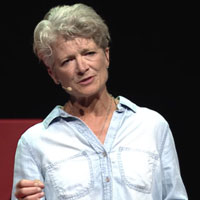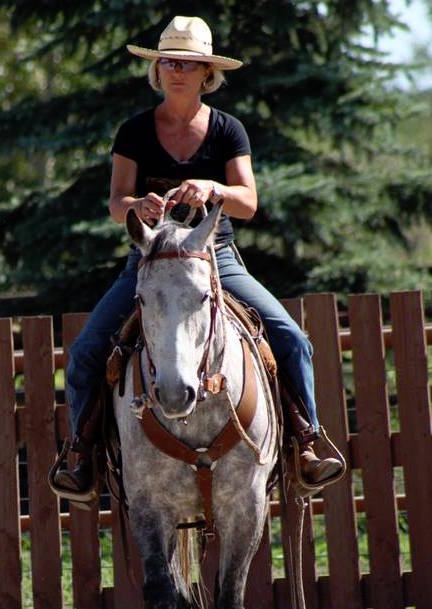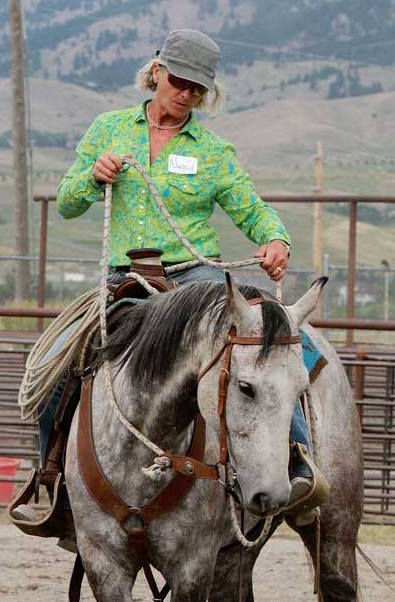 Editor’s Note: We hear this week from Nancy Lowery of Calgary, Alberta. Lowery has been blogging about her Leadership Learning through Horsemanship Experiences for more than a decade. A recent interview series by Lowery explored what Calgary leaders have learned through their relationships with horses.
Editor’s Note: We hear this week from Nancy Lowery of Calgary, Alberta. Lowery has been blogging about her Leadership Learning through Horsemanship Experiences for more than a decade. A recent interview series by Lowery explored what Calgary leaders have learned through their relationships with horses.
“I know something about you without knowing you. I bet you spend A LOT of time in your head.” Writes lifetime pragmatist Darius Foroux.
After spending thousands of hours in the saddle, I still find myself on the side of overthinking. All that thinking means I often miss the opportunity to make the change I want to see in my horse.
We worry about What If? So much so, we often miss What Is.
For years I’ve been watching my horses’ ears as I step into the saddle, yet for some reason I only recently made the connection of watching their ears as I ride. The horse always lets you know what they are about to do and the ears tell you that.

Nancy Lowery
For those of us who do spend too much time in our heads, the good news is that when you pick up the lead rope or put your foot in that stirrup, two thoughts are all you need:
1. How you might solve what is showing up.
2. Strive to understand and give yourself credit for what you already know.
That’s it. You can ignore everything else and clear out the irrelevant bits of information you carry around.
“There is a lot that is taking place that can be felt and not seen, assumed and never mentioned, talked about too much and never seen or felt, the whole thing can be a complete fantasy or a lovely experience or unattainable completely. Depending on your timing and your feel and your understanding of the principals of locomotion.”
Leslie Desmond
First, you have to be able to identify the problem. Getting clear on the source of the issue is where you have to start asking questions. You have probably heard that you have to begin with where the horse is and begin with how the problem might feel from the horse’s perspective. So once you have identified the problem, you begin to work on that. Using everything you already know.
Let me give you an example: A young teen had been making great progress with her horse. But when loping circles to the right, they’d end up in a hard left at the fence. She was frustrated with the horse, herself, and their lack of progress.
 We stopped for a bit to see what she noticed. We started at a walk and then a trot and progressed up to the lope – not worrying about making the perfect circle or whether he took that hard left again. Just paying attention to the horse. After a few go’s, she realized the circle changed long before the hard left. The drift to the left always began halfway through the circle.
We stopped for a bit to see what she noticed. We started at a walk and then a trot and progressed up to the lope – not worrying about making the perfect circle or whether he took that hard left again. Just paying attention to the horse. After a few go’s, she realized the circle changed long before the hard left. The drift to the left always began halfway through the circle.
So, that is where she started working on the problem. She decided direction was more important than gait, so if they dropped to the trot but he was able to keep his nose tipped throughout the circle, that was ok. The feet will follow the nose.
Two things had happened:
She started looking for the problem that created the symptoms
She realized that she already knew how to fix what what showing up.
That teen is now a young woman and has progressed a long way since that challenge of loping arena circles. Recently, I shared with her my thesis on how the horse’s ears let you know what the horse is thinking. The feet may follow the nose, but the ears let you know what’s going to happen.
Yesterday, as we were riding, she exclaimed, “Once you notice that the horse’s ears, you can’t unsee it!”
The more time I spend paying attention to what is happening, the more I learn how those foundational activities give you all the information to figure out what shows up at the higher level. It’s all about developing the common language and developing our ability to really listen, to pay attention, and to notice. With that knowledge, it’s easier to let go of all extraneous thoughts and focus on what is showing up.